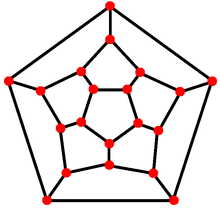Map (mathematics)
In mathematics, the term mapping, usually shortened to map, refers to either a function, often with some sort of special structure, or a morphism in category theory, which generalizes the idea of a function. There are also a few, less common uses in logic and graph theory.
Maps as functions
In many branches of mathematics, the term map is used to mean a function, sometimes with a specific property of particular importance to that branch. For instance, a "map" is a continuous function in topology, a linear transformation in linear algebra, etc.
Some authors, such as Serge Lang,[1] use "function" only to refer to maps in which the codomain is a set of numbers (i.e. a subset of the fields R or C) and the term mapping for more general functions.
Sets of maps of special kinds are the subjects of many important theories: see for instance Lie group, mapping class group, permutation group.
In the theory of dynamical systems, a map denotes an evolution function used to create discrete dynamical systems. See also Poincaré map.
A partial map is a partial function, and a total map is a total function. Related terms like domain, codomain, injective, continuous, etc. can be applied equally to maps and functions, with the same meaning. All these usages can be applied to "maps" as general functions or as functions with special properties.
Maps as morphisms
In category theory, "map" is often used as a synonym for morphism or arrow, thus for something more general than a function.[2]
Other uses
In logic
In formal logic, the term map is sometimes used for a functional predicate, whereas a function is a model of such a predicate in set theory.
In graph theory

In graph theory, a map is a drawing of a graph on a surface without overlapping edges (an embedding). If the surface is a plane then a map is a planar graph, similar to a political map.[3]
In computer science
In the communities surrounding programming languages that treat functions as first-class citizens, a map often refers to the binary higher-order function that takes a function f and a list [v0, v1, ..., vn] as arguments and returns [f(v0), f(v1), ..., f(vn)], where n ≥ 0.